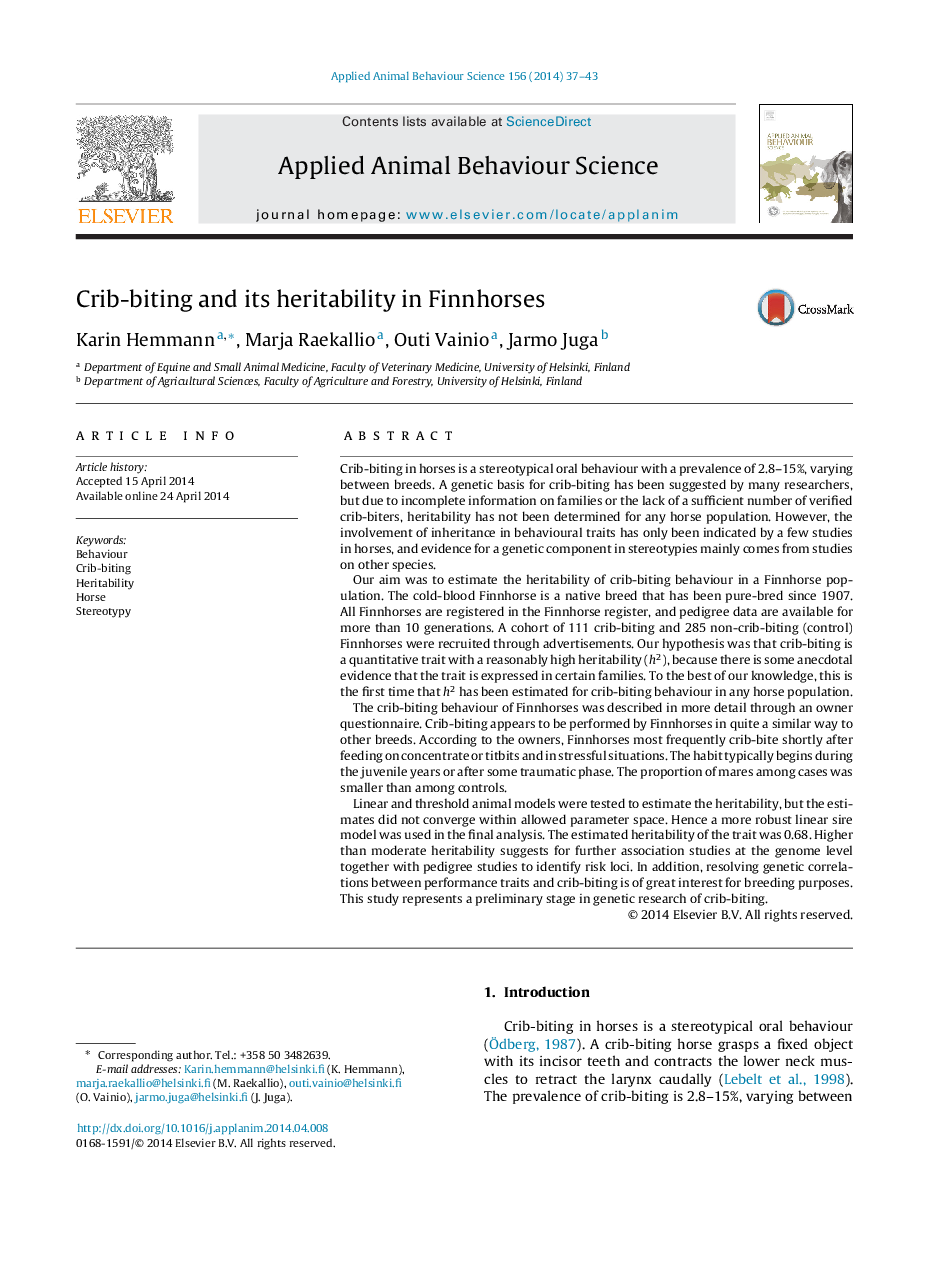| Article ID | Journal | Published Year | Pages | File Type |
|---|---|---|---|---|
| 4522549 | Applied Animal Behaviour Science | 2014 | 7 Pages |
•The data comprised 111 crib-biting and 285 non-crib-biting control horses.•This was the first study to determine the heritability of crib-biting in a horse population.•h2 0.68 supports the assumption that a horse inherits behavioural susceptibility.•Better knowledge of the inheritance pattern of crib-biting is needed.•This study represents a preliminary stage in genetic research of crib-biting.
Crib-biting in horses is a stereotypical oral behaviour with a prevalence of 2.8–15%, varying between breeds. A genetic basis for crib-biting has been suggested by many researchers, but due to incomplete information on families or the lack of a sufficient number of verified crib-biters, heritability has not been determined for any horse population. However, the involvement of inheritance in behavioural traits has only been indicated by a few studies in horses, and evidence for a genetic component in stereotypies mainly comes from studies on other species.Our aim was to estimate the heritability of crib-biting behaviour in a Finnhorse population. The cold-blood Finnhorse is a native breed that has been pure-bred since 1907. All Finnhorses are registered in the Finnhorse register, and pedigree data are available for more than 10 generations. A cohort of 111 crib-biting and 285 non-crib-biting (control) Finnhorses were recruited through advertisements. Our hypothesis was that crib-biting is a quantitative trait with a reasonably high heritability (h2), because there is some anecdotal evidence that the trait is expressed in certain families. To the best of our knowledge, this is the first time that h2 has been estimated for crib-biting behaviour in any horse population.The crib-biting behaviour of Finnhorses was described in more detail through an owner questionnaire. Crib-biting appears to be performed by Finnhorses in quite a similar way to other breeds. According to the owners, Finnhorses most frequently crib-bite shortly after feeding on concentrate or titbits and in stressful situations. The habit typically begins during the juvenile years or after some traumatic phase. The proportion of mares among cases was smaller than among controls.Linear and threshold animal models were tested to estimate the heritability, but the estimates did not converge within allowed parameter space. Hence a more robust linear sire model was used in the final analysis. The estimated heritability of the trait was 0.68. Higher than moderate heritability suggests for further association studies at the genome level together with pedigree studies to identify risk loci. In addition, resolving genetic correlations between performance traits and crib-biting is of great interest for breeding purposes. This study represents a preliminary stage in genetic research of crib-biting.
